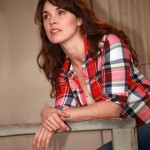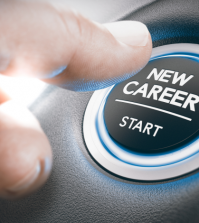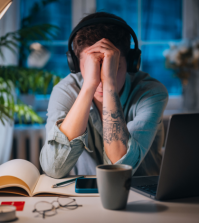- Finding Unshakable Power in a World That Wants to Pull Us ApartPosted 6 months ago
- What could a Donald Trump presidency mean for abortion rights?Posted 6 months ago
- Financial Empowerment: The Game-Changer for Women in Relationships and BeyondPosted 7 months ago
- Mental Health and Wellbeing Tips During and After PregnancyPosted 7 months ago
- Fall Renewal: Step outside your Comfort Zone & Experience Vibrant ChangePosted 7 months ago
- Women Entrepreneurs Need Support SystemsPosted 7 months ago
How To Save Your Own Life

By Danielle Orner
With the crown of my head on the mat, I watch my toes. I walk my feet, one plastic and one flesh, toward my face. Sweat trickles down my back and my core contracts. Even though I feel my body working, it still seems like magic to see one foot and then the other float off the floor. I can hoover in headstand for only a moment but I’ve learned by now that today’s limits will be tomorrow’s victories. After all, I used to believe that yoga wasn’t for me. I used to believe my body was the enemy – the ticking time bomb, daring me to try to live between cancer treatments.
At fifteen, I was an honors student, a varsity runner, a singer, and an actress. After a running injury grew into a lump, I discovered I was also a cancer patient. I started my life in the children’s oncology ward with fake tattoos and body glitter on my bald head. Armed with a dedicated family and supportive community, I did everything I could to remain positive. People called me an inspiration but, honestly, I did whatever I could to survive. With four younger brothers at home and a dad in the Marines, I felt guilty for taking up all my mom’s time. She had to give me daily shots, help me bath, and spend nights beside me in a hospital room during weeklong chemotherapy sessions. I knew if I couldn’t smile my family and friends would drift away.
Just before my sixteenth birthday, the doctors decided to amputate my leg to prevent the spread of my bone cancer. Although I felt a strange sense of peace about this decision, I also knew that no one would ever see me as well again. I would always be sick and broken in everyone else’s eyes.
I learned to walk again. When I had legs made, my prosthetist’s goal was always to make me look and walk as normally as possible. The best I could do was “pass” for able bodied. Ashamed of my flesh-toned covers, I stuck to wearing pants and avoided walking past windows where I could see the reflection of my halting gate. I auditioned for school plays but avoided changing in the dressing room. My body was an obstacle to my goals. I fought to have an identity beyond the battle going on inside.
On the night that I received what I thought was my last chemo treatment, another girl died. We had shared hospital rooms and I knew her family members, who often brought homemade dinners. We had similar cancers and nearly identical treatment plans. I went to hold her hand one last time before I left. Her family had decided against amputation, fearing their daughter would be damaged beyond repair. I walked out of the hospital that night wondering why I had been saved. I vowed to make a difference, to be worthy of the work and resources the doctors and my family had put into me.
Before graduation, the cancer returned in my lungs.
The doctors cut through muscle and spread my ribs to surgically remove the tumors. Two years later, more grew back. The pattern of re-occurance continued until the heart-stopping doctors’ calls blurred into one memory of hopelessness. Even when well, I planned my life in the three-month incriminates between scans. I couldn’t feel the cancer growing, so I stopped trusting my body.
For over a decade, I let doctors, specialists, and the scans take control of my health. Meanwhile, I fought to master the other areas of my life. I stopped telling people about my amputation and cancer. I didn’t want to be defined by it. In college, I threw myself into a frenzy of acting, journalism, working as a resident advisor, and writing. To my doctors’ horror, I left for London to study abroad just a few weeks after a major surgery. After graduation, I got my teaching credentials as a way of giving back to the community. A second full round of chemotherapy after four lung surgeries woke me up. I had to learn to care of myself and to listen to myself.
The doctors recommended removing my ovaries to protect my fertility from a second year of toxic treatments. I declined. I already knew the side effects of my treatments included Leukemia along with cardiac damage, hearing loss, and many other debilitating possibilities. I hadn’t been promised a future since the first diagnoses when I had asked my mom, for the first and only time, if I was going to die. If I managed to ever attain health, I decided I would adopt. I didn’t know then that preexisting conditions make the already difficult process of adoption nearly impossible. But I did know that I’d worked with kids extensively and I wanted to foster so if the time came I could love any child. Besides, I couldn’t stomach the idea of yet another surgery or the additional medical bills to store my genetic materials. Bills my parents would have to pick up since I still hadn’t been able to get a full-time job.
By this point, I was finally angry with God. I grew up in a very spiritual family and was taught to look for lessons in all life experiences. But I wanted to know what I could possibly learn from having the same horrible experience over and over again. I had done all I could to inspire people with my faith and courage in the face of adversity but I still wasn’t getting well. I was deeply frustrated at not being able to build a life worthy of all the sacrifices made to keep me alive. Apparently, I still had everything to learn.
Those years for me were what writer types like to call “the dark night of the soul.”
Struggling in a marriage to my high school sweetheart who could no longer handle my emotions and needs, I was terrified that letting go might mean no one would ever love me again. He reminisced about the strong, upbeat girl I had been in school and claimed I wasn’t that person anymore. I was broken beyond fixing. He knew what I had been through. He had witnessed my body shutting down from an anaphylactic shock resulting from experimental chemo and taken me to get a brain scan at two in the morning because I kept blacking out. If he thought I had nothing left to give, maybe I didn’t.
Desperate for change, I started doing my research.
I discovered Kris Carr, The China Study, and many other anti-cancer diet books. I began experimenting with new recipes. I visited a farm animal sanctuary. I became a vegan and focused on a diet rich in whole foods. I started craving a form of exercise that could reconnect my mind and body. I wanted to find peace, strength, and connection. I had already returned to weight lifting and cardio. Still, I needed to reach a deeper level of acceptance.
I was worried I wouldn’t be welcome in a general yoga class. I was afraid of making a fool of myself or of being pitied. So, I practiced at home with DVDs and books. I couldn’t find any specialized classes for someone like me. Still, I had the nagging desire to overcome my fears and practice with others. I had to get over the idea that yoga is only for the few – for the graceful, the flexible, and the whole.
Finally, I attend a class. I hid in the back. I was terrified that I’d end up standing around the whole time unable to follow the flow. Self-conscious and awkward, I did what I could. I kept showing up and the amount of things I could do increased. The number of poses I learned to modify grew. I found myself moving through entire classes. I no longer cared that people could see my prosthetic leg in certain poses.
Yoga defies expectations. Over the years I’ve watched people walk into class expecting yoga to be easy, torturous, nothing but exercise, youth-restoring, spiritual, woo-woo, relaxing, boring, weird, and life-changing. Once you begin your practice, you learn to give up those labels and just show up. In each of my classes, I never know what is coming next. I never now if it will be something I can do or something I have to work on or something I’ll never be able to master. I’m okay with that now. I’m okay with showing up to uncertainty.
Yoga helps me realize that life is a combination of practice and letting go. As a writer and actress, I deal daily with the cycle of creation, risk, rejection, and getting back out there everyday. Creation happens in the midst of doubt and obstacles. I never know if a book will sell but I start writing those first words anyway. I don’t know when or where I’ll get funding but I sit down with a team of producers to edit my screenplay anyway. Like a strength pose where I am learning to relax muscles even as I they shake with effort, I breath into my projects. Yoga reminds me to live in the now. It reminds me, if I keep showing up for myself, I can do more than I imagined.
Several times, I have gone into auditions only to have directors say some version of “you’re great but what’s wrong with your leg.”
One even told me he was ready to cast me in the lead as long as my leg was healed by opening night. He thought I had a brace. He ended up casting me anyway. Some casting directors are excited about me until they watched me walk, painfully slow, up the stairs. Before, I always wore pants and worked hard at “overcoming” the disadvantage of my limp.
In an industry that is all about appearance, I’ve often thought I would be fool to even try.
Sure I could get theater scholarships and do community productions but make a career out of it, no way. Then, I started combining my talents and writing my own roles. I’ve discovered that I am in the perfect place to tell stories that haven’t been told. I’ve decided to embrace all parts of my identity and stop judging myself by how well I pass for “normal.” I am me. And there is great story in that.
Now, I dream of pushing the boundaries – both in my life and work – of what is considered feminine, healthy, and sexy.
I had to let go of my survivors’ guilt and stop trying to be someone worthy of being saved. Being “an inspiration” can be extremely lonely; especially when I let that title keep me from being, saying, and doing what my true self desires. Despite fears of disappointing friends and family, I let go of a marriage that no longer served me. Currently, I continue to work on the fear associated with the type of films I’d like to make and messages I’d like to send. Will people see me differently after they know what goes on in my head? Maybe. But I’m opening myself anyway. I’m tired of clutching my life so close.
In the western world, we are so competitive and so focused on keeping hold of things we have no control over. We set ourselves against our own bodies. We talk in terms of fighting back the bulge, the disease, and the clock. We hold tight to images of what we need to be before we find happiness. We think of diets and exercise in terms of deprivation and torture. We push and we struggle. I had to let go of the fight. Now, I listen for where I need to go and take steps into the darkness. I embrace my body in sickness and in health, in triumph and in failure, in strength and in weakness.
Three years into remission, I am no longer afraid.
I used to spend so much time worrying about whether or not cancer was growing inside me. I worried about what the treatments would take away from me – hair, energy, my career, comfort, future plans, pieces of my body. Now, I treat my body like a temple with fresh vegan food, relaxation, and forgiveness. I celebrate what is here now. I put more scars on my mat than there are scars on my body. No matter what comes, I will be present for it.
Being committed to my health and the environment gives me a sense of stability in a tumultuous, and at times toxic, world. I love it when people ask me how they can change their lives to be more like me. I think it’s kind of funny when people forget to pity me. Together, we are learning to see vibrance instead of disability. I’ve changed the intention behind the question: why me?
For me, yoga is more than an exercise; it is a spiritual practice. When I am on my mat, I remember to just be. I remember that life is a balance between what we can control and what we can’t. I’m learning to live between effort and surrender.
 Danielle Orner practices yoga for her health and sanity in sunny Southern California. Diagnosed with bone cancer at age 15, she spent a decade undergoing surgeries, scans, and treatments. Changing her lifestyle revitalized both her body and spirit. A writer, actor, and yoga teacher, Danielle seeks to explore the body-spirit connection in questions of identity, sexuality, and healing. Her first feature screenplay, Exposure, placed as a semi-finalist in the Francis Ford Coppola American Zoetrope Screenplay Contest and was recently optioned by an indie film company. She just finished writing, The Cancer Saint Rebels:A Memoir of Reclaiming My Body. Visit her at www.danielleorner.com or on Facebook. Watch her 2 minute inspirational film on body image at http://youtu.be/dV5nfNy3MgQ
Danielle Orner practices yoga for her health and sanity in sunny Southern California. Diagnosed with bone cancer at age 15, she spent a decade undergoing surgeries, scans, and treatments. Changing her lifestyle revitalized both her body and spirit. A writer, actor, and yoga teacher, Danielle seeks to explore the body-spirit connection in questions of identity, sexuality, and healing. Her first feature screenplay, Exposure, placed as a semi-finalist in the Francis Ford Coppola American Zoetrope Screenplay Contest and was recently optioned by an indie film company. She just finished writing, The Cancer Saint Rebels:A Memoir of Reclaiming My Body. Visit her at www.danielleorner.com or on Facebook. Watch her 2 minute inspirational film on body image at http://youtu.be/dV5nfNy3MgQ






